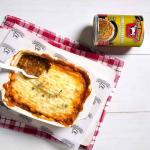This company is behind some of the country’s most popular treats, including Zoo cookies, Provitas, Romany Creams, and Mini Cheddars.
Although biscuits are a popular snack today, they weren’t always sweet, colourfully decorated with miscellaneous zoo animals, or even tasty.
As ship-building techniques changed and the European population grew during the 18th century, biscuits became important naval provisions. In 1750, the first “ship biscuits”, also known as “hard tack”, made their appearance.
The age of exploration turned into the age of colonialisation, which meant that voyages were longer. Although ships took fresh food wherever they could find it, sailors primarily relied on preserved meat and ship biscuits.
These biscuits were essentially a hard, flat, and long-lasting bread. Since moisture makes baked goods spoil quickly, ship biscuits were also made very dry.
Unsurprisingly, these biscuits were renowned for their inedibility. They were so indestructible that some sailors even used them as postcards.
A few things started to change biscuit-making. The slave trade Britain established in the 1600s in the West Indies and America made sugar much cheaper and more widely available.
Cooking technology was also evolving, and more people started baking biscuits at home. As tea became entrenched in the British social scene, biscuits went from a dessert course to an integral part of afternoon tea rituals.
It was during this biscuit boom, in 1851, that baker Johann F Baumann docked in Durban with a vision, and he established Baumann & Co., a food manufacturing company.
In 1877, while in London, JF Baumann accidentally met his nephew, Johann ML Baumann. His family had accepted that JF Baumann had died years ago. He had no idea that his nephew even existed when he met him.
The two remained in close contact, and in 1880, JML Baumann and his wife travelled from London to Durban, where he joined his uncle’s business.






















